A Journey To A Better Me 2016 Japan
On July 10, 2016, 36 CQU teachers and students arrived in Japan for a 14-day academic visit. The academic visit delegation consisted of 33 students from the School of Management Science and Real Estate, the School of Architecture and Urban Planning and the School of Civil Engineering, and 3 teachers from the School of Management Science and Real Estate as the team leaders. During the 14-day visit, the students and teachers visited reputable colleges and universities, well-known enterprises and historical and cultural sites in Japan. They also participated in course learning, round-table discussion, project site visit and cultural experiencing activities and gained an in-depth understanding of the advanced management ideas and approaches of Japanese construction enterprises from a professional and cultural perspective. Students said they were greatly impressed by the good qualities demonstrated by the social culture of Japan.
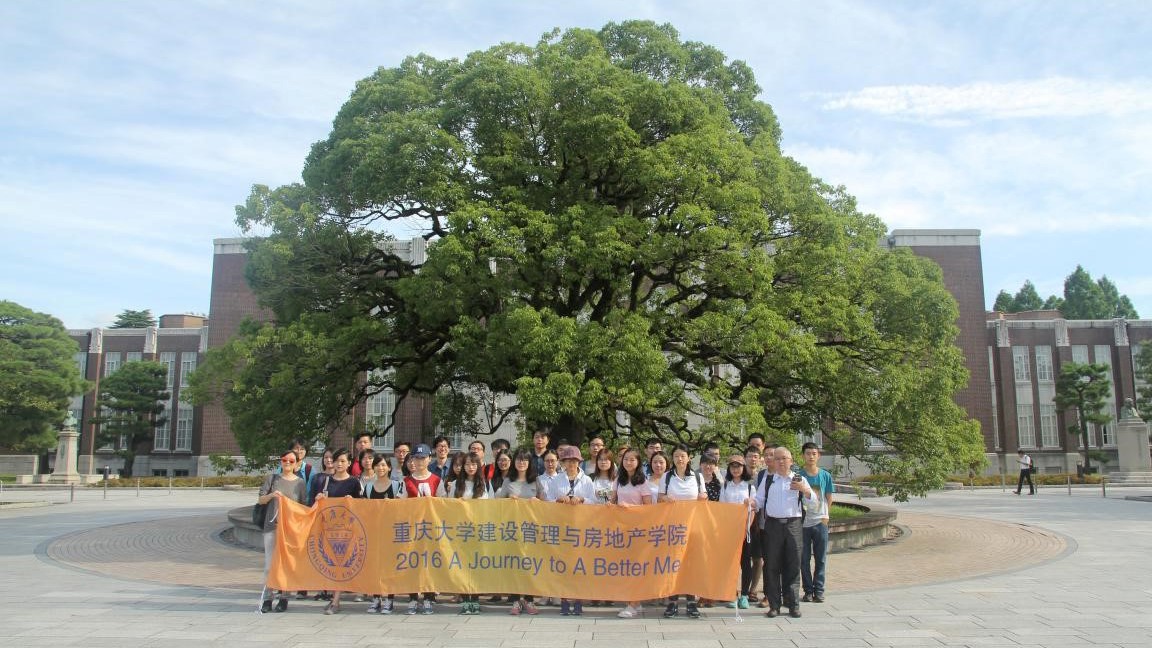
Learning at Kyoto University
At Waseda University, Mr. Kiuchi Shu introduced the visiting delegation to the traditions of wooden buildings in Japan and their modern development. In the 6th Century, influenced by the Chinese architectural style, architectural elements such as tiled roof and stone stylobate were introduced into buildings in Japan. The architectural forms of Buddhist temples, palaces and shrines became increasingly diversified and started to develop their unique styles. The Todai-ji Temple in Nara is the world largest wooden building; the suspended Kiyomizu Stage in front of the court of Kiyomizu Temple located in Kyoto is supported by 139 stand columns, and is a national historic site of Japan. The world well-known Senbon Torii in Fushimi Inari-taisha is located in Kyoto. Each single torii is made up of a thick wooden pillar, a beam on the pillar and a square-column under the pillar.
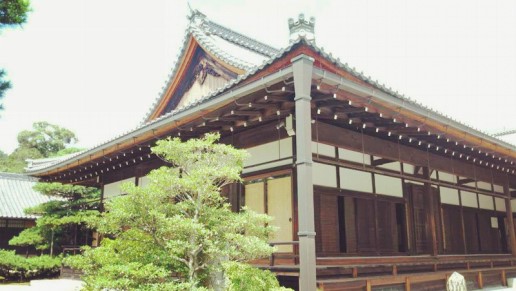
Traditional buildings in Japan and their modern development
Traditional buildings in Japan are simple and elegant in color, and generally have a symmetric and solemn outline. The wood frame, thatch roof, stretched eaves and delicate and neatly-structured interior space add to the oriental characteristics of ancient buildings in Japan as being solemn, shapely and reserved. Nowadays, wooden buildings in Japan, while inheriting the three-order design and rules of architecture (wood cutting, compasses and squares, and mortise-tenon joint), are earthquake-proof due to the use of modern technologies. The interfaces between wood components and their connection with the ground are greatly improved to enhance the overall durability and earthquake-proof performance of the housing. In counties and cities of the Kansai Area (such as Nagoya), students noticed that various modern wooden houses there are arranged in an orderly fashion in the street blocks, and this modern city is taking on a traditionally elegant and vital look as a result. Examples of classical Japanese wooden buildings include Sunny Hills Cake Shop and Asakusa Cultural Tourism Information Center. They are wooden buildings integrating traditional and modern elements designed by a Japanese architect named Kengo Kuma, and are a perfect combination of tradition and modernity in terms of material and structure.
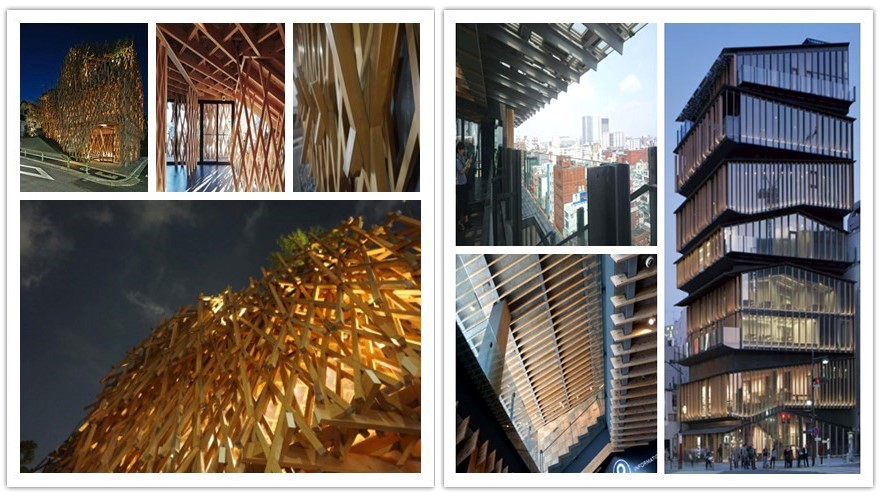
Project management of Japanese construction enterprises
Besides, as concepts like eco-environment protection and sustainable development become widespread, some architectural design offices are trying to design "natural and egoless" buildings. Mr. Tonomura of Norisada Maeda Architectural Design Office put forward the concept of "heteronomy and egolessness", and architectural designers should follow certain rules, and commit their inspiration to contingency and naturalness while including as little as their personal feelings in the design. There are 3 levels, namely, rules, algorithm and unconsciousness. Through the study of representative architectural works, students gained a deep understanding of the creative inspirations and ideas.
By participating in the course learning and discussion at Kyoto University, and field visit to typical project sites under construction of top 5 construction enterprises, members of the delegation got to know the advanced management ideas and approaches of Japanese construction enterprises, which are of great referential value for the project management sector of China.
1. Enterprise operation and management ideas
Professor Furusaka of Kyoto University said that the purpose of the manufacturing industry of Japan was to ensure customers pay 100 yuan and get commodities worth 120 yuan. This is what is being practiced by Infroneer Holdings Inc. The motto of Infroneer Holdings Inc. is "integrity, desire and skills". To put it in a simple way, it encourages its employees to win over the trust and support of clients with their integrity, extraordinary skills and desire to do better. In terms of quality management, Infroneer Holdings Inc. has been sticking strictly to its motto. From Tagokura Dam in Japan to Stonecast Bridge in Hong Kong, Infroneer Holdings Inc. volunteered to undertake difficult tasks in project construction in an effort to improve their skills and provide clients with products and services with better quality.
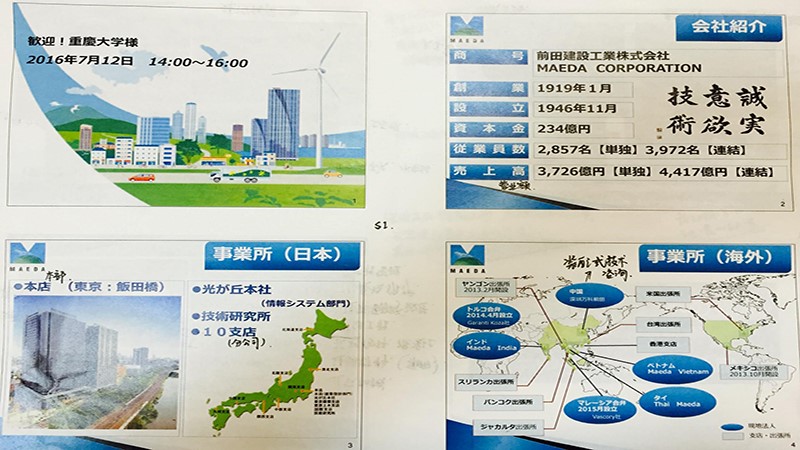
2. Building industrialization
Kyoto University is a national comprehensive university and a cradle of marvelous scientists. Graduates from the University are playing a pivotal role in the research and academic community. The lecturing teacher for the delegation is Professor Furusaka Shuzo from the SYSTEM Engineering Lab (Furusaka Laboratory). The research areas of Professor Furusaka almost cover all aspects of construction activities. In the building industrialization sector, there are mainly the following research topics: general building industrialization, residential building industrialization, productive/production design of buildings (design and construction optimization), building patent technology, industrialization development strategies of enterprises, analysis of the popularization process of Composite Structural System/BIM/intelligent development, automation and building industrialization, and promotion and industrialization standard of building industrialization.
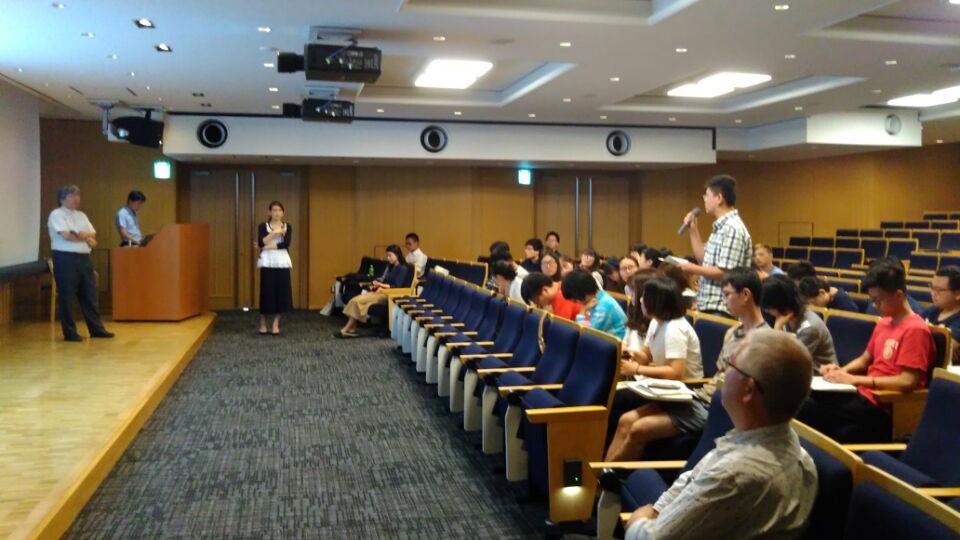
After communicating with Professor Furusaka, students laid particular stress on building industrialization during the visit to typical project sites of enterprises. As one of the top 10 construction enterprises in Japan, Infroneer Holdings Inc. attaches great importance to the application of the building industrialization ideas in its construction activities. The "Tokyo Towers" apartment complex undertaken by Infroneer Holdings Inc. is a masterpiece project to which building industrialization is applied. Building components such as beams, pillars and floor slabs of the entire Project were pre-fabricated and assembled, so as to shorten the construction period. The construction of each floor took 6 days on average. Besides, there are factories under Infroneer Holdings Inc. engaged in processing of pre-fabricated components. They accept orders from within and without the Company, and provide pre-fabrication services for many construction companies.
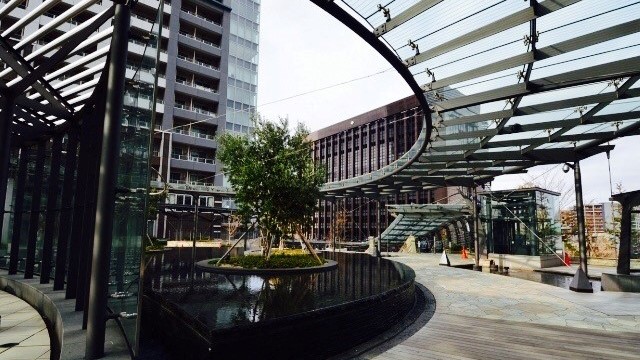
At the Buddhist University undertaken by Kajima Corporation, the roof of the hall is made up of 40 pre-fabricated reinforced concrete components, connected by wire ropes with diameter of 23 mm. Furthermore, the Solaria Nishitetsu Hotel located in Kyoto has 6 floors, including 1 floor underground and 5 aboveground. It was undertaken by Taisei Corporation completely using the cast-in-situ approach rather than building industrialization. According to the interpretation of the project director and Mr. Furusaka, whether the building industrialization approach is used depends on the construction period and cost of the project. At the Medical Innovation Center Project of Kyoto University undertaken by Shimizu Corporation, students noticed that the reinforcement bars were not processed on site. Rather, they were processed by the supplier at the factory and then delivered to the construction site.
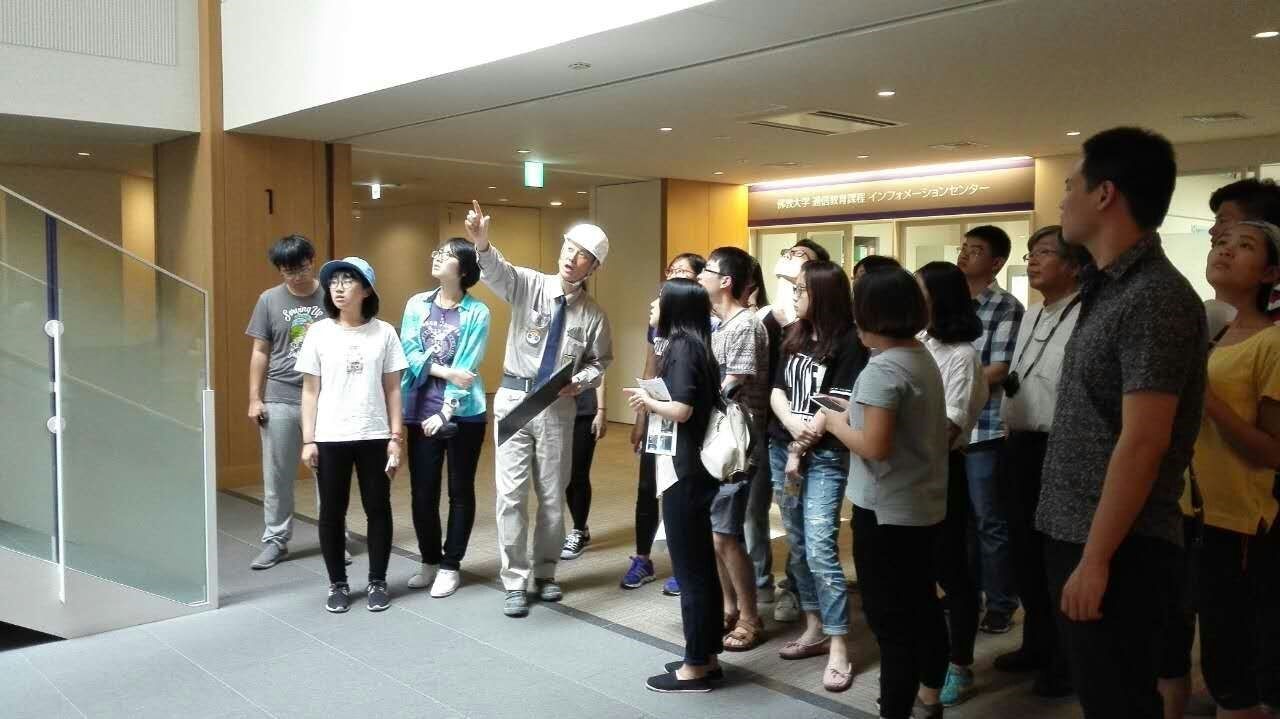
3. Quality management
Shimizu Corporation is the largest construction enterprise in Japan, and has already established a sophisticated system of construction methods, such as the concrete pouring and reinforcement installation. A series of construction methods are adopted to guarantee construction quality of the project. Moreover, compared with Chinese construction enterprises, the biggest difference is that Shimizu Corporation and the majority of other Japanese construction enterprises have remarkable design capacity, and are able to convert design drawings into construction drawings based on their related construction experience and advanced construction methods. As such, they are able to incorporate the design concept of designers into the construction process in a more satisfactory way, and meet the requirements of owners for quality and features of the building.
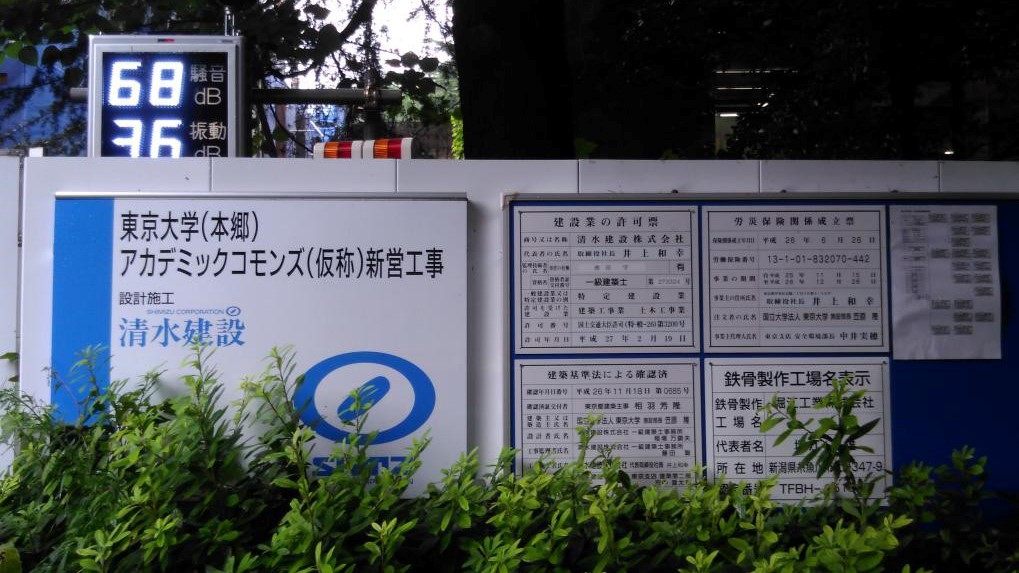
At other large construction enterprises the delegation visited, they also noticed embodiment of the quality management concept. For example, at the Japanese "Buddhist University" Project undertaken by Kajima Corporation, the project director specially showed us the "luxury" toilet that can also be used as the dressing room and rest room. The interior decoration is simple yet gorgeous, and user-friendly. At the Solaria Nishitetsu Hotel undertaken by Taisei Corporation, students were impressed by their efforts made to improve customer experience. The Hotel is built above the metro line, and there will be heavy noise and air shock wave when a tramcar passed by. To deal with this problem, they paved a layer of rubber under the floor slab to reduce noice and vibration. The experience of customers will basically not be compromised upon completion of the Project.
4. Onsite construction management
The building industry serves as one of the pillar industries of Japan's national economy. To survive in the intense competition, Japanese construction enterprises have to make constant improvement in operation mode, construction process, project management and safety management, so as to lower the cost and increase the efficiency while meeting the energy saving and environmental protection needs.
What impressed students most at the construction sites in Japan was that they were clean and tidy. There were almost no slag or flying dust whether at the outdoor sites or indoor operation areas. Besides, the sites were reasonably arranged, construction roads were unblocked and large-sized machinery was placed in a good order. Employees of every enterprise we visited said that they had to clean up the site at the end of the day.
It is the primary goal of each construction enterprise to make every possible effort in the construction process to ensure safety. The site administrators would carry out work arrangement and safety disclosure and inspect the individual safety articles at the beginning of the day. For the visit of the delegation of 36 students and teachers, they did not only established a special route chart, but also required them to wear clothing, safety helmets and gloves as specified before allowing them to get into the construction site. Throughout the visit, two site administrators, one in the front and the other in the rear, gave explanation of the construction site while keeping an eye on the delegation members to ensure that their questions were answered and that they were safe. At the construction site of Taisei Corporation, workers wrapped up every single exposed reinforcement rod in case of accident.
As the idea of green and environment-friendly development became widespread, the "4R" campaign was launched in the construction sector in Japan. The "4R" includes: Refuse (to use non-environment-friendly material), Reduce (material and energy consumption), Reuse, and Recycle. Besides, the construction enterprise has been practicing industrial production of building materials and refined garbage sorting, piling and disposal of building wastes at the construction site, which has greatly improved the management level of the construction site.
5. Earthquake prevention and disaster reduction
Earthquakes strike Japan frequently. Therefore, earthquake-proof performance of buildings is very important to guarantee the safety of the building in its service. As a result, the earthquake-proof technologies in Japan have seen enormous improvement, and the system of earthquake-proof technologies is being constantly perfected. Associate Professor Shimada Yuko from Chiba University is a brilliant researcher in the area of engineering seismology. She explained to students how researchers carried out research of modification of steel, inherent firmness of the building, geological changes, shock absorber and shock absorbing materials, and earthquake simulation experiment, and gave many examples of earthquake-proof measures of many steel structure buildings.
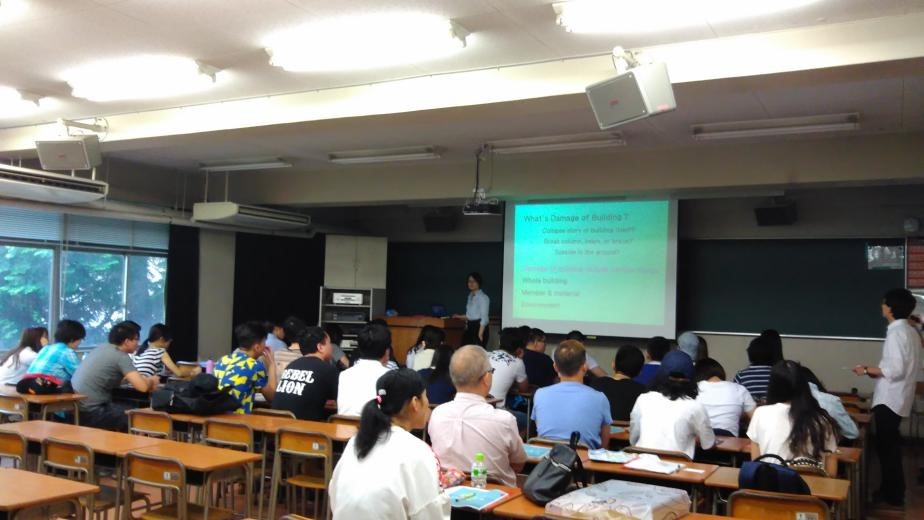
During the visit real estate enterprises in Japan, students were amazed by the efforts the enterprises made in earthquake resistance and hazardous reduction and the achievements they attained. Daiwa House Industry, as an enterprise engaged in real estate development and construction with the highest sales volume in Japan, has been laying particular stress on the earthquake-proof design. Its node design has gone through rounds of optimization on the basis of the original 3-column and 1-body design. Deformability of the nodes was enhanced, the horizontal impact resulting from earthquake waves mitigated and damage to the houses reduced by adding dampers and steel structure components. During the visit, the delegation members were given an opportunity to experience simulated Kobe earthquake.

Life Experience in Japan
During the 14-day visit, besides learning knowledge of construction projects and construction links, students experienced the uniqueness of the Japanese society in aspects including food, clothing, shelter and means of traveling.
Kimono is the traditional costume of Yamato people. Japanese people are often seen to wear kimono on holidays and festivals as a way to carry on with the traditional culture. The day after they arrived in Japan, students tried on kimono. When you are in kimono, you have to behave in a refined manner internally and externally, whether you are standing, sitting or lying.
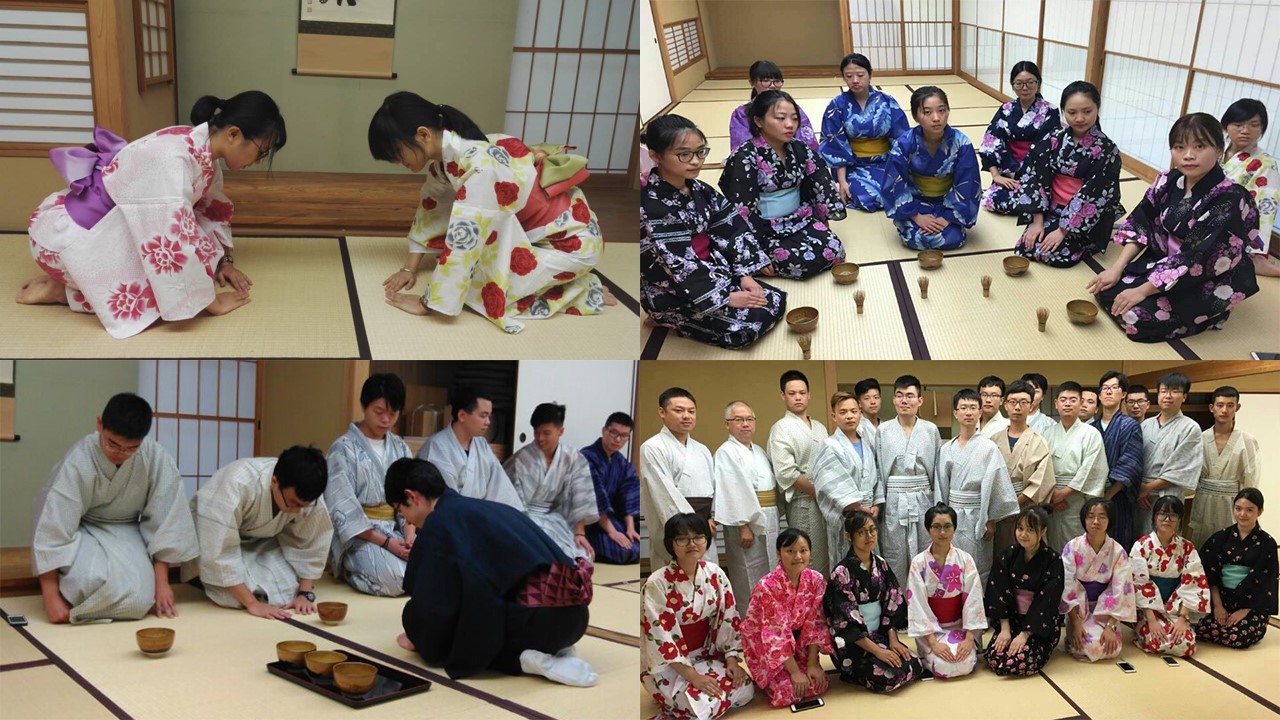
Japanese food is delicate in the way it is made, highlighting nutrition and cooking aesthetics. Typical Japanese food includes rice ball, tempura, soba noodles, sushi, and salad. Musashi Restaurant provided students with a hands-on opportunity to make sushi. Students were both surprised and excited throughout the process. The teacher provided ingredients for students and taught them the way to make sushi and dining etiquette with patience. This showed that the teacher's chariness towards work, sincerity towards other people and seriousness towards etiquette. Furthermore, in Japan, convenient stores and vending machines can be found everywhere. Whether in the dining hall or eatery, you can find automatic ordering machines, which provide great convenience for people.
As for "accommodation", students stayed in the so-called "tiny" rooms of Japan in 4 cities, including Tokyo, Shizuoka, Osaka and Kyoto in the 14-day visit. The rooms, small as they are, are well equipped. Hotel rooms in Japan are typically small, but are quite clean and tidy. Other advantages include their wise use of space, a good assortment of supplies, and considerate services.
From the layout of the metro system in Tokyo, Osaka and Kyoto, it is easy to see that the metro system in Japan is highly developed, making travel very efficient. Another characteristic of the metro system in Japan is that many metro stations are built as a complex that serves as a business center at the same time. In Japan gate machines at the metro stations are normally open. Passengers need only to insert or swipe their IC transport card to get into the station and do not have to wait for the door to open. This is very helpful if the passenger is carrying a luggage suitcase. However, transfer between metro trains is quite painful.
During the 14-day academic visit, CQU teachers and students were serious about every chance they got to learn and experience. Particularly, they were active in sharing ideas and asking questions over discussions, and teachers and seniors from colleges, universities and enterprises in Japan were deeply impressed by the curious and professional attitude of Chinese students. During the 14-day visit, students tasted the uniqueness of this country, and felt with their heart every strange thing. Students had their horizons broadened, knowledge expanded and taste cultivated, and identified what's short in them. With hardworking and perseverance, hopefully, every student is going to have a brilliant future and become a pioneer in building a better world.